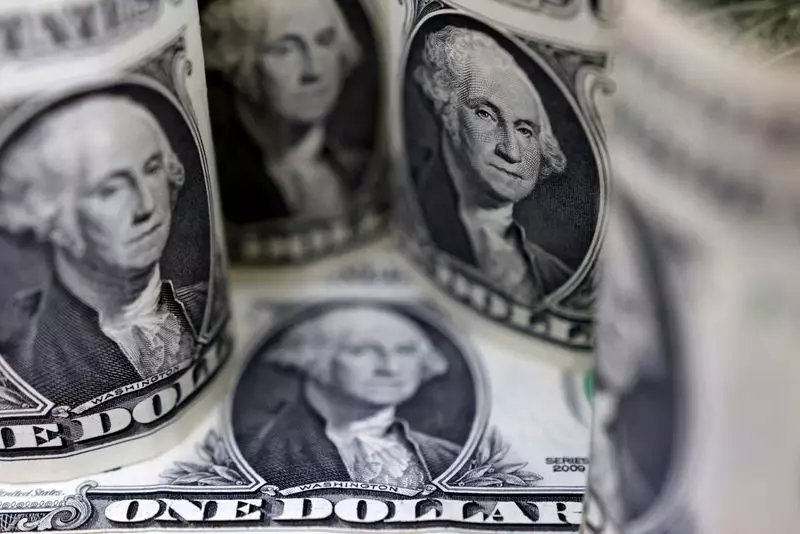The dollar index, which measures the currency’s performance against a basket of major currencies, fell to a nearly five-month low as U.S. inflation data indicated a further slowdown in November. With annual inflation dipping below 3%, market participants now anticipate a U.S. interest rate cut in March. This article explores the implications of this data for the Federal Reserve’s monetary policy and analyzes its impact on the dollar.
Data from the personal consumption expenditures (PCE) price index revealed that inflation in the United States stood at 2.6% for the 12 months through November, a decrease from 2.9% in October. The core PCE price index, which excludes volatile food and energy prices, experienced a year-on-year increase of 3.2% in November, marking the smallest rise since April 2021. The Federal Reserve closely monitors these measures of inflation to meet its 2% target.
The Fed’s Monetary Stance
Market observers interpret these inflation figures as supportive of the Federal Reserve’s recent inclination towards an easier monetary policy. Stuart Cole, chief macroeconomist at Equiti Capital, suggests that the Fed may consider its mission of controlling inflation accomplished, especially when accounting for the remaining impact of prior tightening measures. This sentiment aligns with the market’s expectation of multiple rate cuts throughout 2024, potentially commencing as early as March.
Pressure on the Dollar
Following last week’s Federal Reserve meeting, where the possibility of accelerated rate cuts emerged, the dollar has faced selling pressure. The dollar index slipped to its lowest level since late July, standing at 101.7 and showcasing a year-to-date decline of approximately 2%. Equiti Capital’s Cole attributes the dollar’s weakness to the widening interest rate differential resulting from the Federal Reserve’s shift towards accommodating monetary policy.
Concerns and Limitations
While the Federal Reserve’s dovish December pivot favors a continued decline of the dollar in 2024, the strength observed in the U.S. economy can potentially limit the currency’s depreciation. Despite market expectations, the European Central Bank (ECB) anticipates requiring more time, likely until spring, before assessing its policy outlook. This context implies that predictions of an interest rate cut in March or April are unfounded, as stated by ECB policymaker Bostjan Vasle.
Implications for Other Currencies
The Swiss franc reached its highest level against the dollar in almost nine years, reflecting the dollar’s diminishing strength. The Swiss National Bank’s discontinuation of the franc’s minimum exchange rate against the euro in January 2015 contributed to this currency pair’s volatility. Sterling, on the other hand, experienced a 0.09% increase against the dollar amid positive British retail sales data overshadowed by downward revisions to third-quarter GDP. The yen weakened against the dollar by 0.25% following a significant slowdown in Japan’s core inflation, indicating a potential extension of the central bank’s monetary stimulus.
Risk-sensitive currencies such as the Australian and New Zealand dollars traded higher, with the Aussie reaching its highest level since July. The market’s revival of interest in cryptocurrencies is also noteworthy. Bitcoin, which experienced a series of declines in 2022, slipped slightly to $43,726 but remained near its eight-month high. The introduction of spot bitcoin and ether exchange-traded funds (ETFs) has contributed to the resurgence of the crypto market, with traditional finance companies filing for these products.
The latest U.S. inflation data indicates a slowdown, reinforcing expectations of a rate cut in March. The dollar has weakened as a result, with the Federal Reserve’s dovish monetary stance pushing the currency towards a decline in 2024. However, the strength of the U.S. economy may impede this depreciation. Other major currencies, such as the Swiss franc and the yen, experienced notable movements against the dollar, while risk-sensitive currencies and cryptocurrencies demonstrated resilience. Evaluating these factors collectively allows for a more comprehensive understanding of the current economic landscape and the potential opportunities and challenges it presents.


Leave a Reply